AMD vs. Intel: Battery Life Investigated
by Jarred Walton on August 5, 2009 5:00 PM EST- Posted in
- Laptops
Laptops: Comparing Apples to Apples
Anyone looking to go out and purchase a new laptop is almost certainly interested in a couple things: how much does it cost, and what sort of battery life can you expect? Answering those questions for any specific laptop is simple enough, provided we can get a sample unit for testing. However, it becomes more difficult to answer these questions when you're looking at the big picture -- i.e. AMD vs. Intel laptops. The pricing question is easier: laptops using AMD platforms are (usually) cheaper than equivalent Intel platform laptops. That's simple enough: you're paying more for the Intel brand. But what about battery life?
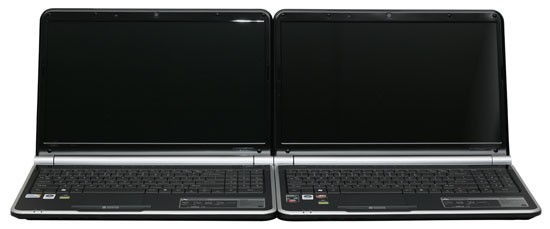 |
We have long tried to answer that question, but the best we could do up until this point was to compare "similar" laptops. Getting the same LCD, hard drive, optical drive, and most importantly battery has been very difficult -- so difficult that we have not been able to do it. A few manufacturers offer competing AMD and Intel laptops with very similar specifications, but no one seemed willing to send their AMD-based system. Were they afraid of cannibalizing sales of their more expensive laptops? Did they just think that an AMD-based laptop wouldn't stand up well in our testing? We don't know for sure, but what we do know is that Gateway has stepped up to the plate and sent us two all but identical laptops. We've been busy the past week or two putting the laptops through our test regimen, and we will have the full review shortly. In the meantime, we thought you might be particularly interested in the battery life you can expect.
Here's a quick look at the two laptops. On top is the AMD-based Gateway NV52, and below it is the Intel-based Gateway NV58.
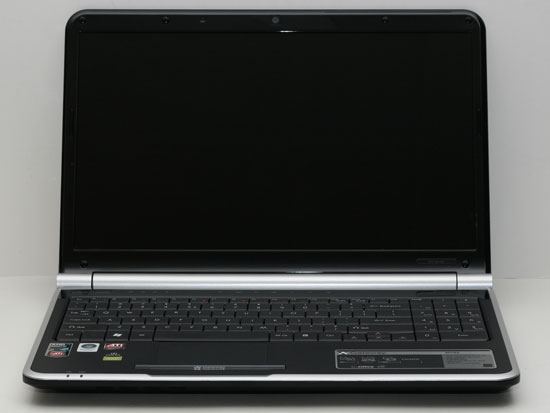 |
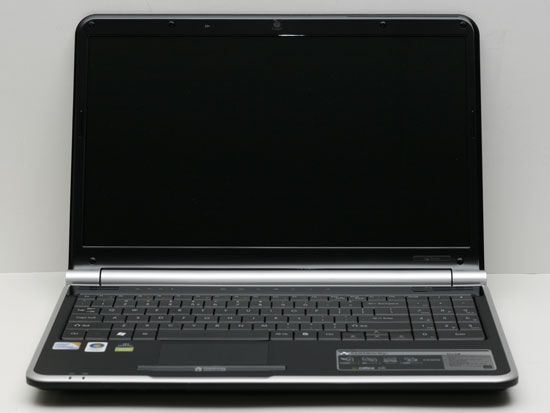 |
Here's a second look, focusing on the keyboards. Once again, AMD is above and Intel is below.
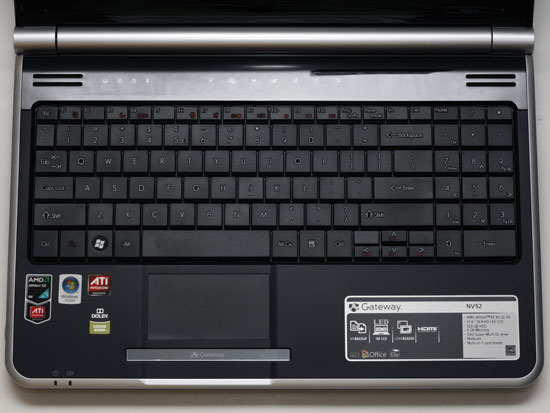 |
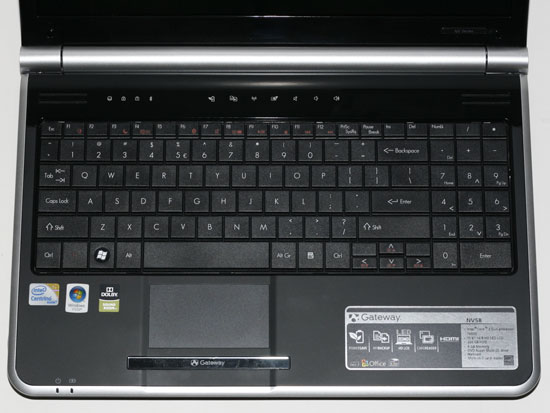 |
The chassis are identical from the outside, and everything else is the same as well other than the motherboard, chipset, and processor. Both come with 4GB DDR2 memory, a 15.6" 1366x768 LED backlit LCD, 320GB 5400 RPM hard drive, and a DVDRW. Both also include Gigabit Ethernet and 802.11n WiFi (Intel WiFi Link 5100 for the NV58 and Atheros AR928X for the NV52). In fact, even the CPUs have the same 2.1 GHz clock speed -- not that CPU clock speed matters -- as well as 35W TDP ratings -- not that that matters either, as we'll soon see. On the AMD side, we have the QL-64 (65nm, 2.1GHz, 2x512K L2, 3600MHz HyperTransport bus), and on the Intel laptop we have the T6500 (45nm, 2.1GHz, 2MB shared L2, 800MHz FSB). We should also mention that the NV58 costs more than the NV52, $500 for the NV52 and $580 for the NV58. What does the extra $80 buy you?
We will have performance numbers in our upcoming full review, but considering this is a match between AMD's old dual-core Athlon 64 X2 (K8 architecture) and Intel's Core 2 Duo, you can probably already guess the results. Intel is quite a bit faster in all of the CPU benchmarks. On the other hand, the AMD platform comes with much better integrated graphics, so if you would like to do a bit of 3D gaming on occasion (at low to medium detail levels) AMD easily wins the graphics benchmarks. Now let's look at battery life.










80 Comments
View All Comments
blackshard - Wednesday, August 5, 2009 - link
Hi Walton, I sent you a mail with some findings related to 65nm AMD processors parts.BTW, reading the datasheets, there are no newer Athlon/Turions with TDP below 31W. QL parts are all 35W parts according to AMD document #43373 ("Power and Thermal data sheets for notebooks") and they are worse than RM and ZM parts dealing with power management (2 power states vs 3 power states, 2 power planes vs 3 power planes on ZMs)
AMD site often is not updated or reports bad information.
jonup - Wednesday, August 5, 2009 - link
Jarred, what are the GPU power settings? I have a older TK-57 with RS690 (x1200) and I have the GPU trottle down to 20MHz on battery w/out load. Are the result different under different GPU power settings?Thanks!
JarredWalton - Wednesday, August 5, 2009 - link
The GPU setting is "Maximum Battery Life" for battery power, but I did not get any explicit readout of clock speed using the utilities I tried. I'm not sure what the minimum clock speed is, but the max (default) speed appears to be 500MHz.jonup - Thursday, August 6, 2009 - link
Thanks buddy! I used GPU-z to get the clock from my laptop (RS690M). However, this utillity does not give me a reading for my desktop's RS780. It must be something with the 780G. This chip has been out for a while and they should have had a support for it. It has to be a hardware limitation.vol7ron - Wednesday, August 5, 2009 - link
expected. curious if that's a result of the gpu.Sazar - Thursday, August 6, 2009 - link
It's a combination I am sure.The lower TDP on the intel procs is probably the biggest benefactor to Intel's numbers but the graphics likely plays a part too.
atlmann10 - Wednesday, August 5, 2009 - link
Yes; I was wondering that myself, when I saw the overhead keyboard comparisons, and noticed the ATI emblem. One of the things that's really hit me (I am still running an X2 oc'd), other than the performance difference. While it may not be super realistic in a performance vector until you hit the higher core2 and then of course the I7 line. It is still there and enough to notice. I think one of the things that is really going to kick AMD is if they don't get themselves smaller and do so fast.This is shown in a mobile platform much more readily in a mobile platform. Not to mention they may use energy conservation as a big selling point on the corporate side of things (IE servers). They are going to loose that rather quickly if they don't. This is doubly so in a mobile arena. This is because while they use higher energy conservative memory graphically, the base on the gpu is still bigger than Intel's. So the Intel mobile product has a dual advantage. Not only is the CPU considerably smaller and therefor energy conservative there CPU is also two times smaller on a nanoscale point.
So on a mobile platform I am actually surprised they only loose by a quarter percentage on battery life. They need to really get their operations in gear on research.
cocoviper - Thursday, August 6, 2009 - link
Yea I think that ATi GPU should be mentioned because a true apples to apples would involve something like a Geforce 9300 in the Intel box.That AMD system is definitely going to be more attractive if you plan on playing an occasional game. On the flipside if ALL you do is plan on staying on the desktop running office and web apps, then Intel is definitely the way to go.
WeaselITB - Wednesday, August 5, 2009 - link
I'd think so. I'm not able to find specific TDP numbers anywhere, but it sure seems to me that the Radeon HD 3200 will have higher draw than the GMA 4500MHD.Yes, yes, integrated chipset, blah blah blah, whatever; I think the point still stands.
JarredWalton - Wednesday, August 5, 2009 - link
It would be reasonable for the HD 3200 to use a bit more power than the GMA 4500... but then the AMD part is in a 55nm chipset vs. a 65nm chipset for the Intel part, which should help. The bigger issue is likely the 65nm AMD CPU vs. the 45nm Intel CPU... plus generally better power management on Intel's side as far as I can tell.AMD does a good job of turning down CPU speeds and voltages when the system is idle (5.25X multiplier and 0.950V at idle, during testing), and Intel does likewise (6x multiplier and 0.925V at idle). However, power draw at idle favors Intel and under load the difference between the platforms grows even larger, and I'm not even putting any explicit load on the GPU. It shouldn't require a lot of GPU power to run Windows Vista, even with Aero enabled.